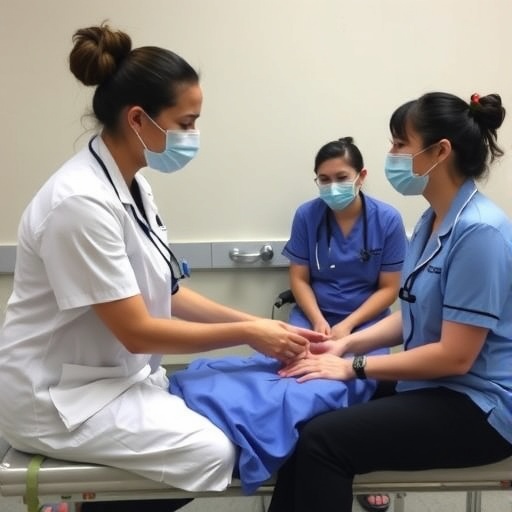CHICAGO–A wearable medical patch measuring the beat-to-beat variation in heart rate is a promising device for the early detection of hypoglycemia, or low blood sugar, in type 1 diabetes, according to the researchers who tested the new monitor. Results of their preliminary study will be presented Saturday at ENDO 2018, the Endocrine Society's 100th annual meeting in Chicago.
Hypoglycemia is common in children and adults with type 1 diabetes. When untreated, severe hypoglycemia can lead to seizures, loss of consciousness or even death. Sometimes people with diabetes do not recognize symptoms of low blood sugar, a problem called impaired awareness of hypoglycemia. Although wearing a continuous glucose meter can help identify hypoglycemia, the glucose sensor, inserted under the skin, typically has a delay.
"This delay can compromise the accuracy of measuring low glucose values," said the study's principal investigator, Marleen Olde Bekkink, M.D., Ph.D., an endocrinology fellow at Radboud University Medical Center in Nijmegen, Netherlands. "People with impaired awareness of hypoglycemia may need to wear an additional monitor."
Past research found that hypoglycemia speeds one's heart rate and alters heart rate variability, which is the normal beat-to-beat variation in heartbeats. Olde Bekkink and her colleagues tested the feasibility detecting hypoglycemia using a commercially available biosensor called the HealthPatch (from VitalConnect, San Jose, Calif.) that measures heart rate and a single-lead electrocardiogram, or ECG. The patch continuously measured the heart rate of 27 men and women with type 1 diabetes and self-reported frequent impaired awareness of hypoglycemia. All study subjects wore the adhesive patch on their chest, plus a continuous glucose meter, for five days at home. In a diary, they recorded any low blood sugar level (below 70 milligrams per deciliter), verified by fingerstick measurement.
Wireless technology transmitted the heart rate data to a mobile Apple device, either an iPhone or iPod. Then the investigators used an algorithm they developed to determine various parameters of heart rate variability. They conducted their primary analysis on 39 hypoglycemic events that occurred in 10 subjects.
In 28, or 72 percent, of the low blood sugar events, the algorithm detected clear patterns of change in heart rate variability at the start of hypoglycemia, Olde Bekkink reported. She said these changes correspond with what occurs at the beginning of low blood sugar: an activated sympathetic nervous system and suppressed activity of the parasympathetic nervous system.
"Timely detection of impending hypoglycemia is critical to avoid severe, potentially life-threatening hypoglycemia," Olde Bekkink said. "Our proof-of-principle study found that measuring heart rate variability using a wearable device in an outpatient setting seems promising for alerting to upcoming hypoglycemia."
Because 11 hypoglycemic events displayed no detectable changes, Olde Bekkink said they must further refine the algorithm to increase its accuracy and precision before being able to use the biosensor in daily practice for patients with type 1 diabetes. Then the researchers would translate the data into an audiovisual hypoglycemia alert sent to a mobile device, she noted.
###
This study received funding from the Dutch Diabetes Research Fund in Amersfoort, Netherlands, and from Radboud University Medical Center's innovation fund.
Endocrinologists are at the core of solving the most pressing health problems of our time, from diabetes and obesity to infertility, bone health, and hormone-related cancers. The Endocrine Society is the world's oldest and largest organization of scientists devoted to hormone research and physicians who care for people with hormone-related conditions.
The Society has more than 18,000 members, including scientists, physicians, educators, nurses and students in 122 countries. To learn more about the Society and the field of endocrinology, visit our site at http://www.endocrine.org. Follow us on Twitter at @TheEndoSociety and @EndoMedia.
Media Contact
Jenni Glenn Gingery
[email protected]
202-971-3655
@EndoMedia
http://www.endocrine.org




